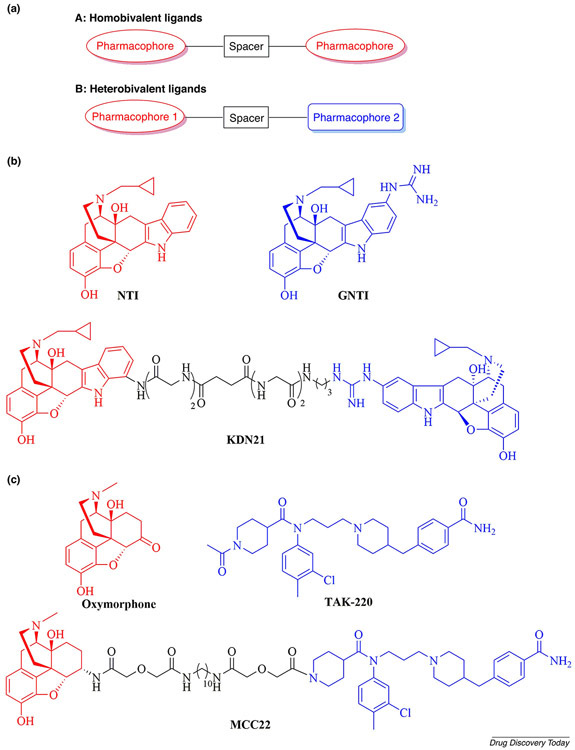Figure 1.
(a) A general schematic diagram for homobivalent and heterobivalent ligands. (b) The chemical structures of the bivalent ligand KDN21 and its two monomeric counterparts, NTI and GNTI. (c) The chemical structures of the bivalent ligand MCC22 and the two lead compounds oxymorphone and TAK-220.

